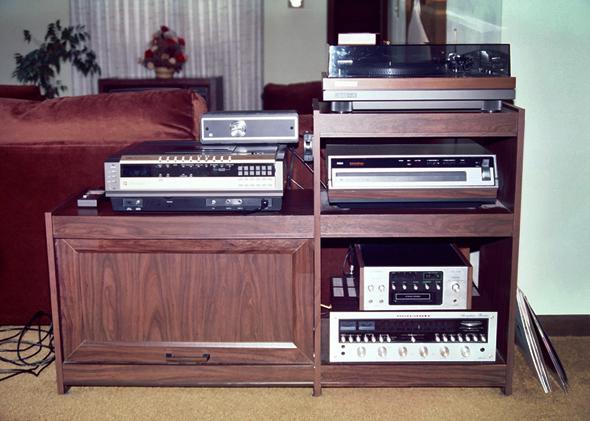Those who came of age in the Internet era may not know that they owe their ability to go online to a court decision 30 years ago today about a mechanically intricate analog tape recorder. In 1983 and 1984, I and several other young lawyers for the electronics and entertainment industries sat on the floor of a Supreme Court hallway every week to see if the court’s opinion in the Sony Betamax case would be released. We all knew the outcome would be very important. But we didn’t imagine what a turning point it would be.
Commercial audio recording was common for most of the 20th century—home audio recording became feasible in the 1950s and common in the 1960s. Video recording, however, required much greater storage capacity. It became possible when Ray Dolby and his colleagues at Ampex Corp. mounted magnetic recording heads on a wheel rotating at an angle to a synchronized moving tape. Engineers from Japan’s consumer electronics industry reduced the size and cost of video recorders until a cassette model could be built into a TV console. In 1976 Sony Corp. introduced the Betamax home VCR, with a broadcast tuner and programmable clock. For the first time, consumers could watch audiovisual entertainment at a time and place not chosen by the content owner or distributor.

Photo courtesy hcalderonmeister/Flickr
In response, Universal and Disney studios sued Sony for “contributory” copyright infringement. They admitted that selling a Betamax recorder did not directly infringe their rights but claimed it “contributed” to infringement by consumers, who could now record shows, movies, and sporting events. Judge Warren Ferguson of the U.S. District Court for the Central District of California, based on testimony (including from children’s TV host Fred Rogers, who said he welcomed home recording of his shows) and usage surveys, declined to ban the Betamax. He said nothing in the law required an injunction against the sale of a “staple article of commerce” that could be put to both infringing and non-infringing uses. But the appellate court held in favor of the studios. It instructed the trial court to grant the studio’s request for an injunction against the sale of home VCRs.
U.S. law allows successful copyright plaintiffs to choose “statutory damage” awards of up to $150,000 per work infringed. By choosing to appeal to the U.S. Supreme Court, rather than acquiesce and seek a “license” from the entertainment industry to sell VCRs to consumers, Sony faced serious financial risk. Millions of devices, recording thousands of copyrighted works, could have produced statutory damages in excess of Sony’s capitalization. But Sony did appeal. And after two oral arguments and intense internal debate, the Supreme Court held by a vote of five to four that it is legal to sell a video recorder to a consumer.
In his opinion for the majority Justice John Paul Stevens built twin foundations on which today’s consumer rights now rest. First, personal home recording and storage of an entire copyrighted work can be a lawful “fair use” of the work. Second, selling a product that has substantial non-infringing uses is lawful, even though it is commonly used to infringe. To rule otherwise, the court majority said, would be to enlarge the rights granted to copyright owners, so as to allow anyone whose work might be copied to effectively to control the right of technical innovators to market their own inventions. This, the court said, would “block the wheels of commerce.”
Without these twin protections for consumers and innovators, we could not today buy most consumer digital products or log on to most online services that search for, store, and respond to copyrighted information. All online services, as well as digital devices like DVRs, smartphones, and tablets, must routinely store and display copyrighted information and programming based on consumer searches and requests. Most do not or cannot require advance permission. The Internet itself would have remained a closed circuit primarily for government, educational, and industrial use. There would be no social networks.
The court’s decision in the Betamax case, however, was only one front of a war that the litigation touched off, which continues today. The movie industry immediately pushed for legislation to require studio permission for home rental of prerecorded movies, and for a copyright “levy” (now common outside the United States) of up to $50 per device and $5 per blank tape. More recently the entertainment industry has looked to international treaties, such as the secret Trans-Pacific Partnership negotiations. Plaintiffs can pursue ruinous statutory damages. According to Jason Mazzone in his book Copyfraud, threats of suit keep new products and services off the market even when the innovator is confident that they are lawful. Recently for example, online services have been sued for reporting “hot news” too “soon” after it was originally reported by someone else.
From the moment Justice Stevens read the majority opinion aloud, through the SOPA and PIPA bills, to this year’s congressional hearings on “copyright reform,” the attack on Betamax continues. Today, 30 years later, is a good time read all of Sony Corporation of America v. Universal City Studios Inc. Then send a copy to your representatives in Congress. Ask them not to screw it up.
